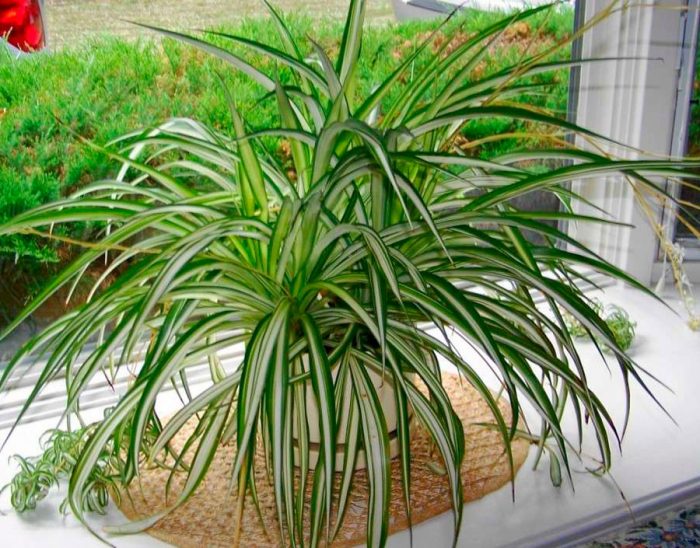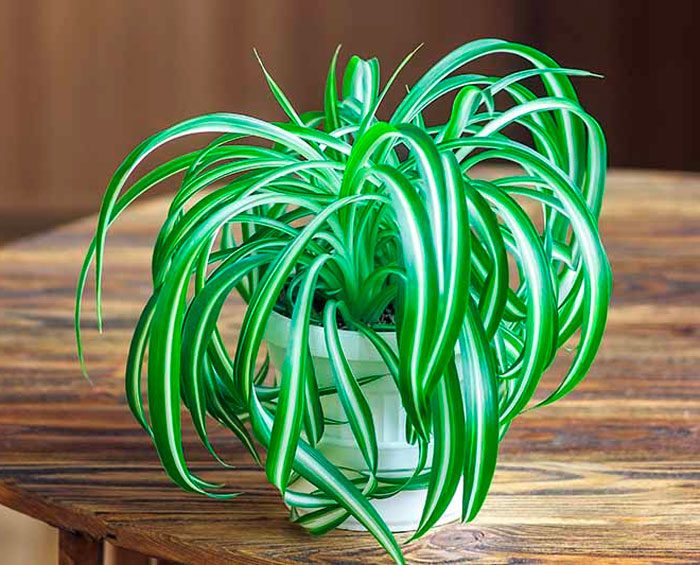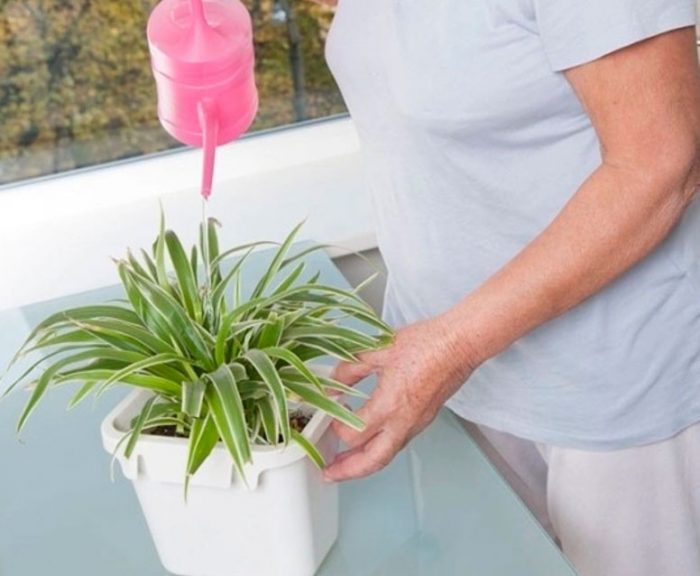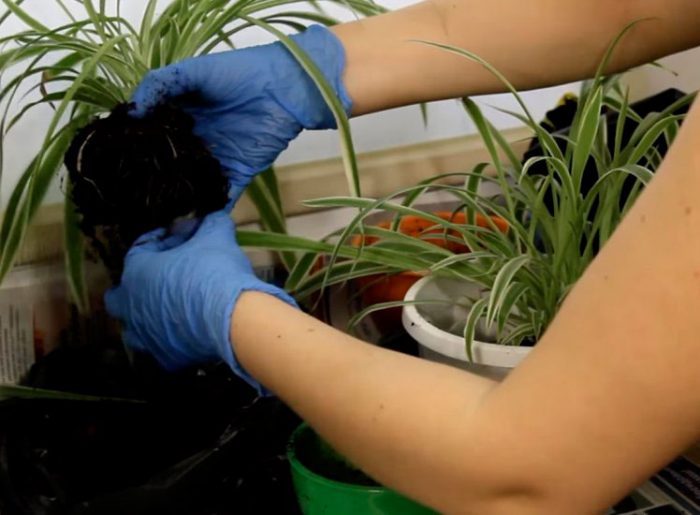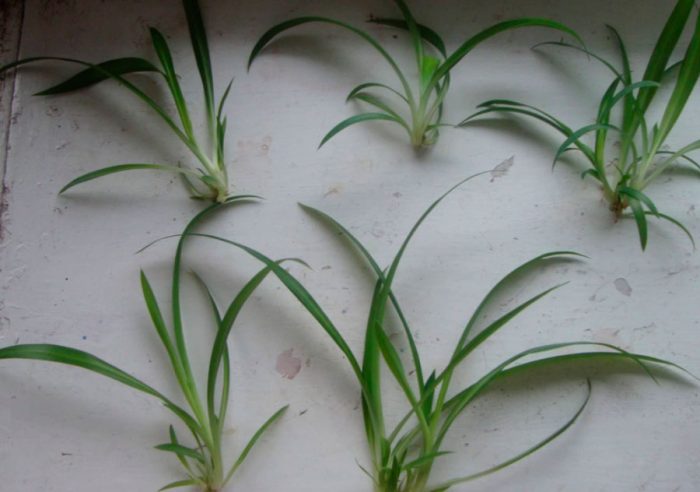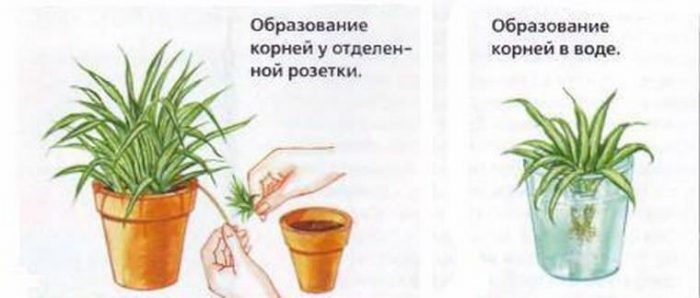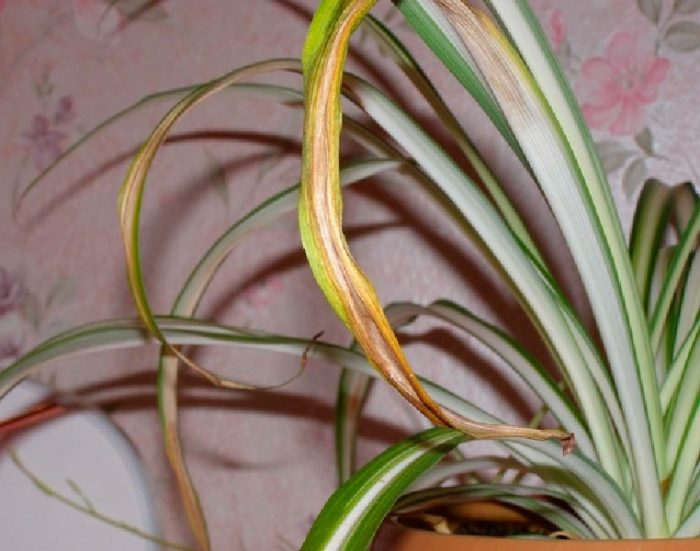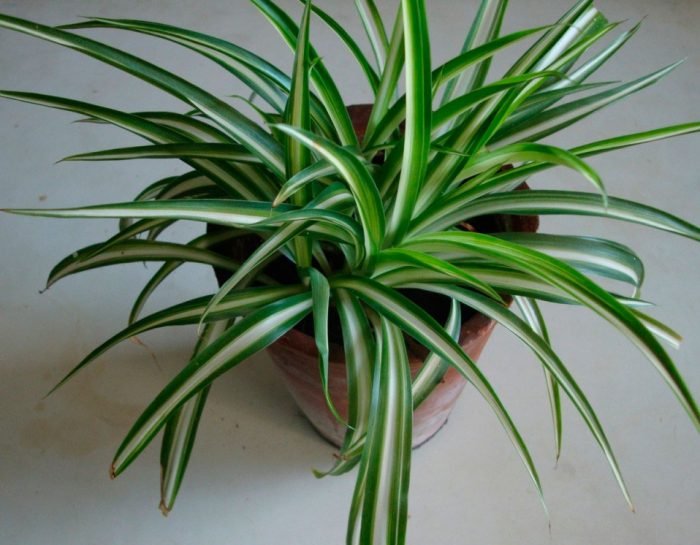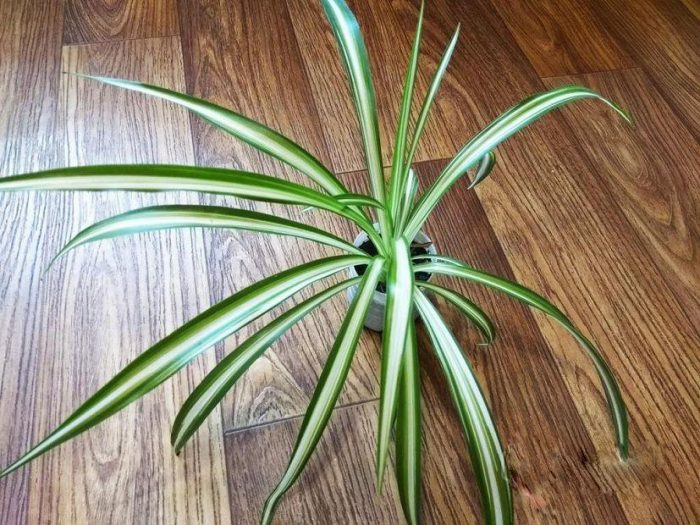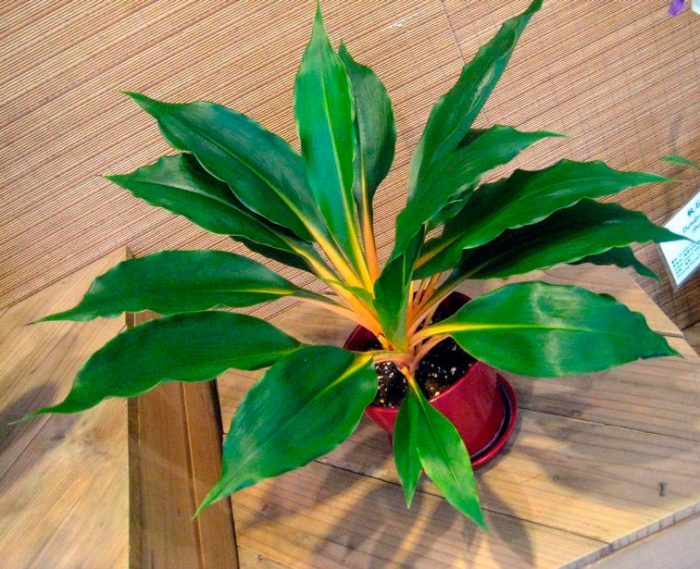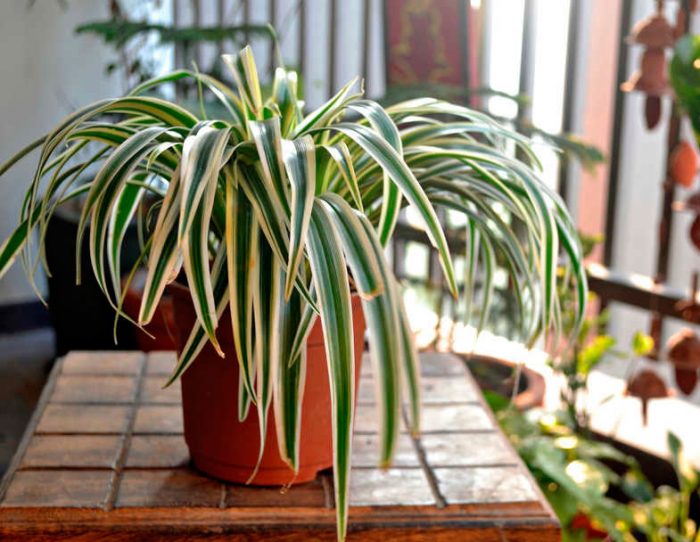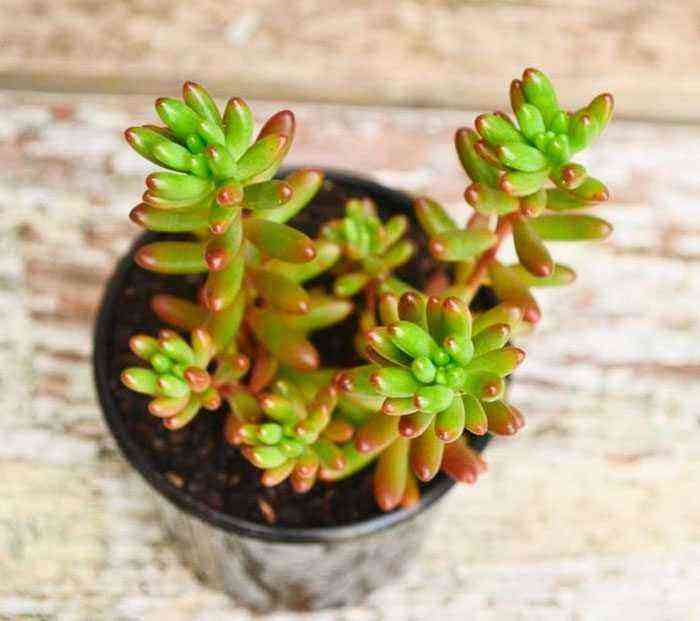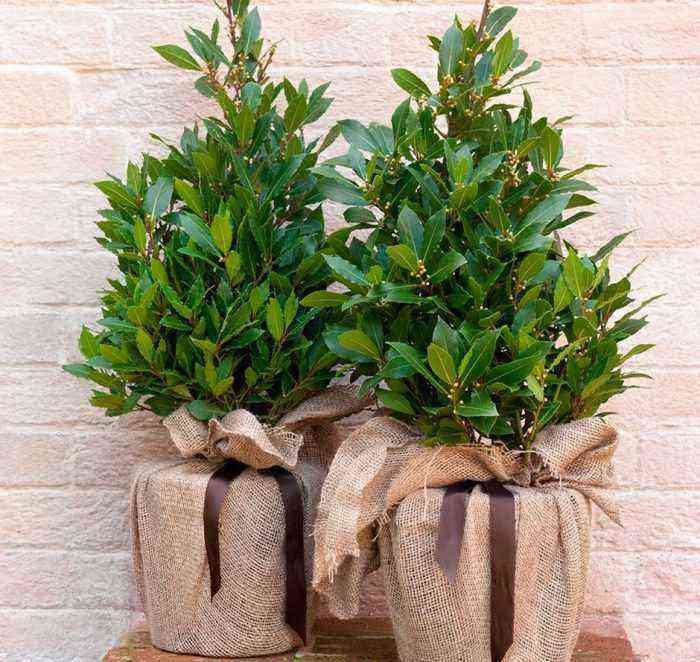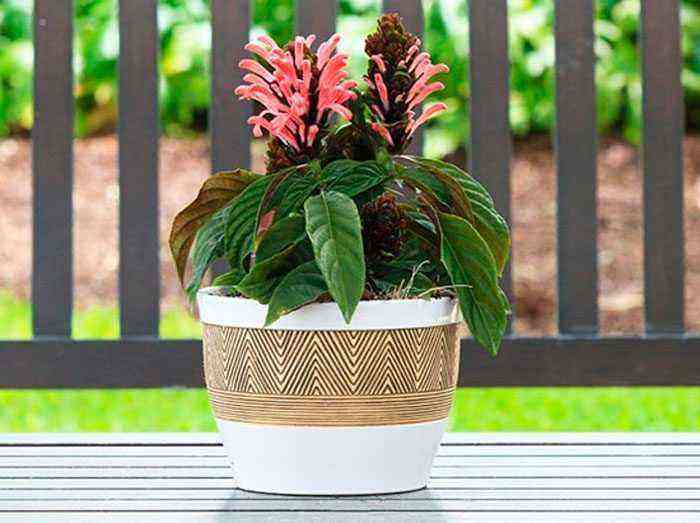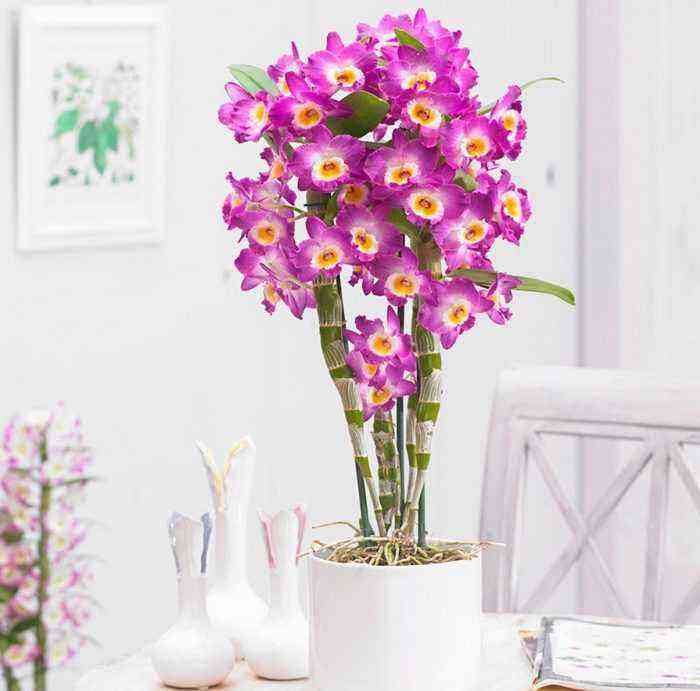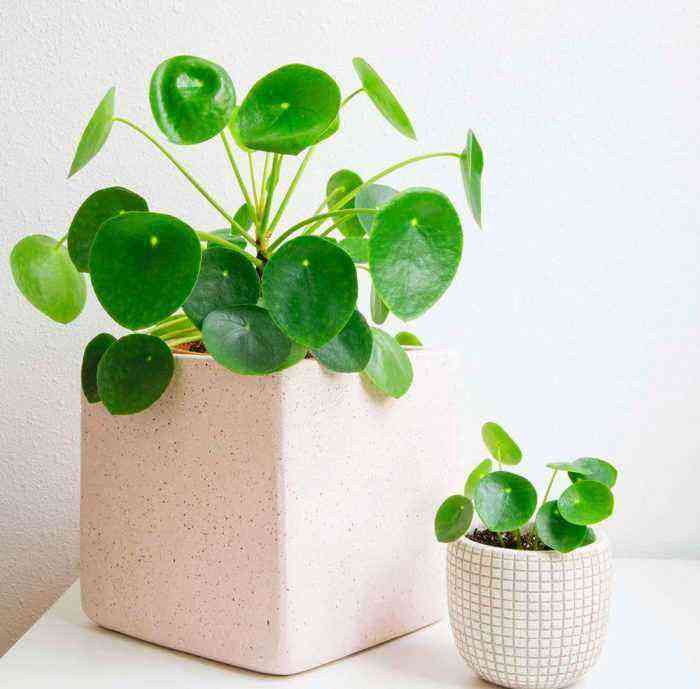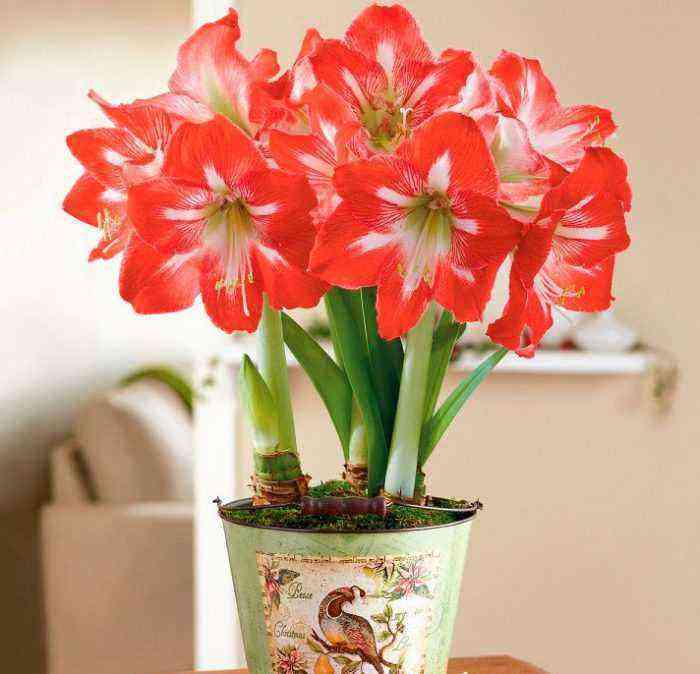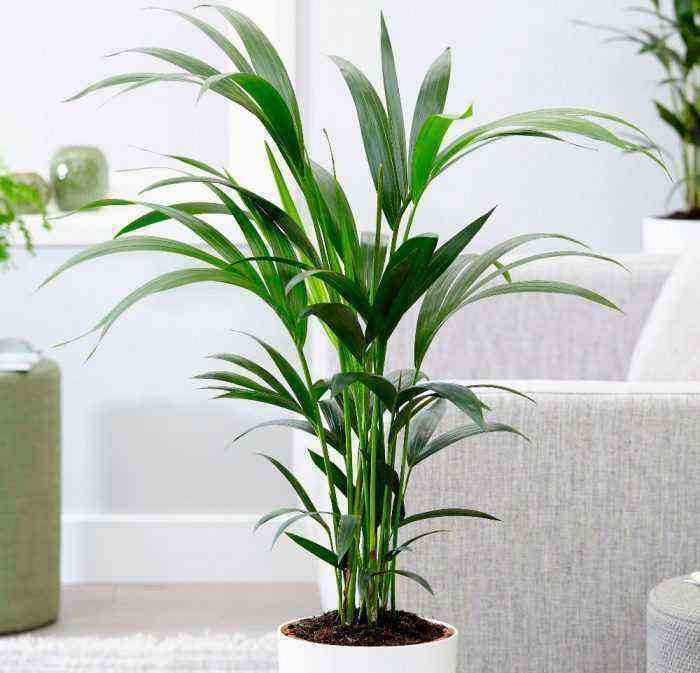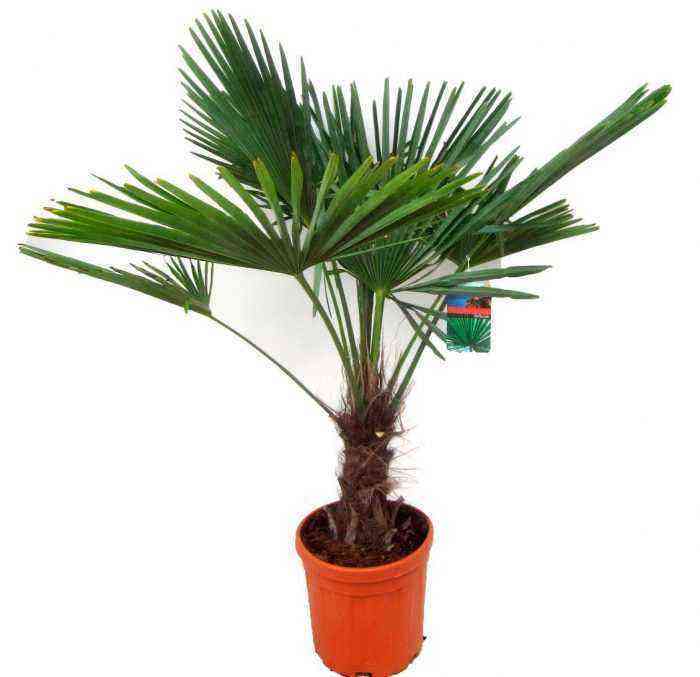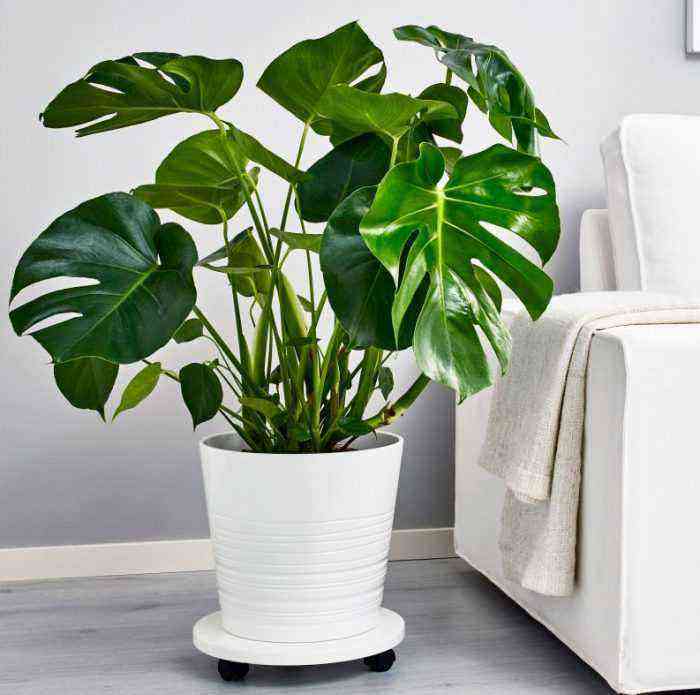The plant Chlorophytum is a member of the Liliaceae family. This genus unites according to data taken from different sources, unites from 200 to 250 species. For the first time in nature, this plant was discovered in South Africa. Today the flower is widespread in tropical zones. Its name comes from the words “chloros” and “phyton”, which translate as “green” and “plant”.
Features of chlorophytum
Chlorophytum is a herbaceous perennial plant with a very short stem and a tuberous root system. Lanceolate or oval foliage is collected in a rosette, its length can reach about 50 cm. During flowering, small white flowers are formed. Such a flower is grown as an ampelous plant, and it is also grouped with other crops or exhibited one at a time. The plant has the ability to purify the air from carbon monoxide and formaldehyde, so it is recommended to grow it in the kitchen.
Brief description of cultivation
- Flowering… Chlorophytum is grown as an ornamental deciduous plant.
- Illumination… You need a bright light that should be diffused. Variegated varieties require brighter lighting, while green-leaved varieties can be grown in partial shade.
- Temperature conditions… Grows well at normal room temperature. Make sure that in winter the air temperature in the room is not lower than 10 degrees.
- Watering… In the spring and autumn period, you need to water the flower systematically and abundantly. Reduced watering is required during the winter months. At this time, watering is carried out only when the soil mixture dries out to ¼ of the depth.
- Air humidity… Common for a living room.
- Fertilizer… The plant is fed only in the spring-summer period 1 time in half a month, for this, organic matter and mineral fertilizers are used alternately.
- The rest period… In October – January.
- Transfer… In the last winter or first spring weeks. While the bush is young, it is transplanted every year, more mature specimens – every 2 or 3 years.
- Soil mixture… It should include sand, turf, humus and leafy soil (1: 2: 2: 2).
- Reproduction… Layering and seed method.
- Harmful insects… Mealybugs, aphids and spider mites.
- disease… With improper care, rot can develop on the rosette of leaves, and spots appear on the leaf plates, the pattern disappears in variegated forms, and the foliage can also lose turgor.
Chlorophytum care at home
Illumination
Chlorophytum grows best on an east or west windowsill, because it needs bright light, which must be diffused. The bush can withstand direct sunlight, but only for several hours a day. It should be remembered that variegated varieties need a lot of light, since in partial shade their foliage loses its color.
Temperature conditions
The plant can grow well in both heat and cool conditions. In the warm season, the flower can be moved outside, but for this you should choose a place that has reliable protection from drafts and precipitation. In winter, do not let it be colder than 10 degrees in the room where the plant is standing, as this can cause severe harm to it.
Watering
Chlorophytum in indoor conditions in the spring-summer period needs a lot of moisture, for this it is watered quite often and abundantly. If the plant does not have enough water, then the formation of a tuberous thickening will begin. In winter, watering should be more scarce, but at the same time make sure that the clod of earth in the pot does not dry out, but stagnation of the liquid in the root system should not be allowed.
Spraying
You don’t need to moisten the plant with a spray bottle. However, if you do this regularly, then the bush will begin to grow and develop faster.
Fertilizer
In the spring and summer period, feeding such a flower is carried out regularly 1 time in 15 days, for this, mineral fertilizers and organic matter are used alternately.
Chlorophytum transplant
While the flower is young, it needs more frequent transplants, which are carried out every year, and adult specimens are subjected to such a procedure once every 1 or 2 years. They are transplanted in the last winter or first spring weeks. For the cultivation of chlorophytum, a wide container is chosen, which is filled with a light and loose soil mixture, it should include humus, sod and deciduous soil, and also sand (3: 2: 2: 2). Be sure to make a good drainage layer at the bottom of the pot.
Methods of reproduction
Cultivation from seeds
Chlorophytum seeds are sown at the end of winter or in the first spring days. Before sowing, it is recommended to soak the seed in water for 12-24 hours, while replacing it regularly (every 2-3 hours). The box is filled with a substrate consisting of humus, leafy soil and sand, or of peat and sand. Moisten the surface of the soil mixture and evenly distribute the seeds on it, which are not sprinkled on top with the substrate, but they are only slightly pressed into it. Then the container is covered with glass or transparent film (make sure that the shelter does not touch the surface of the ground). The optimum temperature for the emergence of seedlings is from 21 to 24 degrees, while the crops must be systematically ventilated and humidified from a spray bottle.
The first seedlings should appear after 3-6 weeks. When this happens, you need to start accustoming the plant to life without shelter, for this the glass is removed every day for a while, while the duration of the procedure is gradually increased. After 2 to 4 true leaf plates are formed on the seedlings, they are picked into separate small pots. And the grown and strengthened plants are planted in a soil mixture for adult chlorophytums (see above).
Reproduction by layers
In some types of chlorophytum, grown in indoor conditions, layers are formed on the peduncles, which are leaf rosettes. If necessary, they can be cut and rooted in containers with water or substrate. Then the plant is transplanted into an individual pot.
Possible problems
- Leaves turn brown… If fertilization is not regularly applied to the substrate or in insufficient volume, then the tips of the leaf plates of chlorophytum can become brown. It can also happen due to too low air humidity, excessively high temperatures, or mechanical damage.
- Spots on the leaves… If in winter it is too hot in the room and at the same time regular stagnation of liquid is observed in the soil mixture in the pot, brown specks form on the foliage.
- Leaves turn pale… The foliage becomes faded and lethargic if the room is hot and the lighting is poor. It can also happen if the plant feels a lack of minerals.
- Chlorophytum rots… Rot on the bush appears due to excessively abundant watering, most often this occurs in winter. Another reason for this can be a very dense substrate.
- Leaves become monochromatic… When growing variegated varieties, make sure that they have enough light, otherwise their foliage may just turn green. On cloudy days, it is recommended to arrange additional lighting for the bushes; for this, fluorescent lamps are used.
- Chlorophytum does not bloom… Bushes that are too young will not bloom. Also, flowers may not appear due to the fact that the root system of the plant is very cramped in the pot.
Harmful insects
Most often, harmful insects settle on those bushes that are weakened by improper care or disease. The greatest danger to chlorophytum is represented by aphids, worms and spider mites.
Useful properties of chlorophytum
Experts have proven that chlorophytum perfectly cleans the air from carbon monoxide and formaldehyde. Since the largest amount of carbon monoxide in the house is in the kitchen, flower growers are trying to decorate it with such a flower.
Types of chlorophytum with photo
Cape Chlorophytum (Chlorophytum capense)
This herbaceous perennial rosette plant has roots similar to tubers. The shape of the smooth pale green leaf plates is lanceolate, they taper towards the base and apex, there is a groove on the front surface of the leaf, and a keel on the back. The leaves are about 3 centimeters wide and up to 50 centimeters long. During flowering, a peduncle appears from the outlet. White small flowers are collected in a brush, they grow from the axils of the leaves located on the peduncle. The fruit is a capsule. In this species, the formation of young leaf rosettes is not observed on the peduncles.
Winged chlorophytum (Chlorophytum amaniense)
The dark green leaf plates have long petioles that range from pink to reddish orange. The grooved foliage tapers at the top and at the base (near the petiole). Cultivars such as Fire Flash and Green Orange have unusual orange petioles. In order for the stalks not to lose their rich color, peduncles should be cut off in time.
Chlorophytum crested (Chlorophytum comosum)
It is also a herbaceous perennial plant with a very short stem. Pale green, smooth leaf plates grow from the stem, they have an elongated lanceolate shape and at the same time bend effectively. A shoot appears from the middle of the outlet, and small white star-shaped flowers grow on it. When flowering comes to an end, young leafy rosettes grow from the axils of the leaves of this shoot. The white roots are very dense and juicy.

